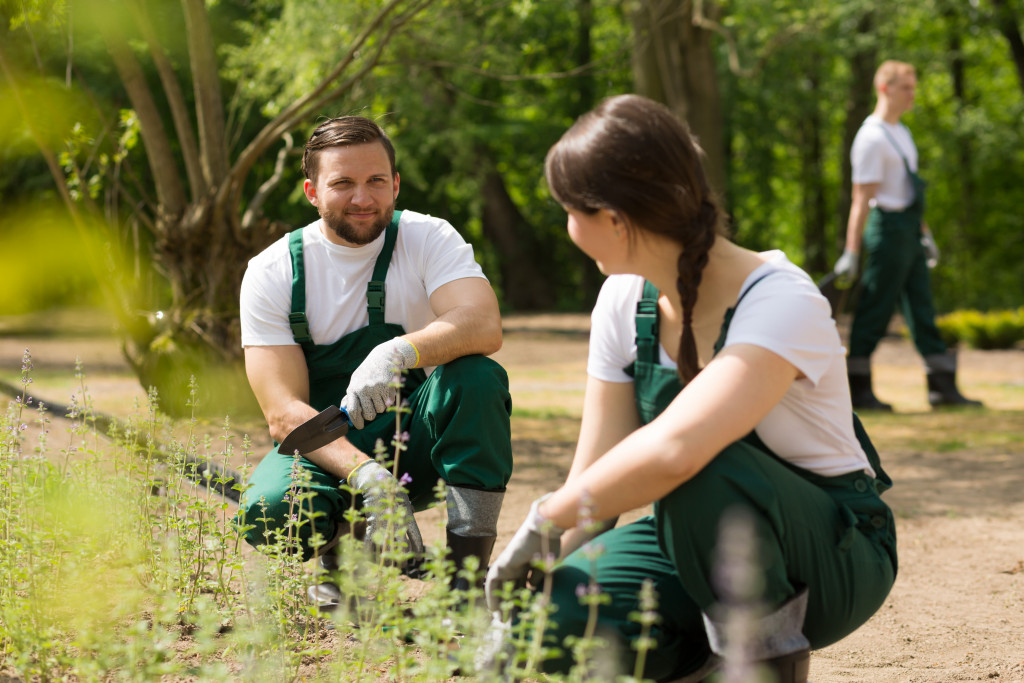Starting a community garden is a proactive way to bring people together and get community members excited about eating healthy, locally-grown food. And according to a study published at the Boston Public Library, participants in community gardens continued to increase over the years.
If you’re thinking about starting a community garden, you’ll need a few things to get started. Keep reading to find out everything you need to get started on your very own community garden.
Location
A location is one of the most important things you’ll need for your community garden. Of course, you can only start building a garden if you have somewhere to make it.
The ideal place for a community garden is a spot with plenty of sunlight and near a water source. You’ll also want to ensure the location is large enough to accommodate all the garden beds and paths you need. Once you’ve found the perfect place, check with your local zoning department to ensure it meets all the requirements for a community garden.
Having a clear and concise place to work is essential for the garden’s success, so do your research and pick a great spot that will make your garden shine.
Soil
The next thing you’ll need is soil. Plants need soil to grow, so it’s essential to pick out soil that will nurture your plants.
If you’re starting a community garden from scratch, you’ll need to bring in topsoil or raised beds. Be sure to get your soil tested before you start planting anything. Doing so will help you determine which nutrients are lacking so you can add them as needed. You can usually get your soil tested at your local cooperative extension office.
Investing in soil that is nutrient-rich will help your plants flourish. So, finding the best soil for your garden will be worth it in the end.
Fences
It would be best if you also considered fences for your community garden. Fences are a great way to protect the garden from animals and make it more private for those who use it.
When choosing a fence, make sure it’s strong and durable so it can withstand the elements. It should also be tall enough to keep out nosy animals. Lastly, be sure to check with your local laws about fencing in public spaces. Some state laws may restrict the type of fencing you can install in a public area.
If you don’t have the resource to use fencing, consider using a hedge or other barrier to keep animals away. Either way, what matters is that you find a way to protect your garden while adhering to local regulations.
Lifting materials
Although it might not be the most glamorous part of garden-building, lifting materials are essential. Especially for community gardens, you might need to move large amounts of soil, mulch, and other materials. Having the right lifting tools will make it much easier to get everything done.
There are many types of materials you can use to lift garden items, but it’s best to opt for those that are easy to maneuver and strong enough to carry your loads. Consider a backhoe or skid steer if you need to move oversized items like large logs. And for smaller jobs, you’ll need quality rigging chains and hooks to help you lift. Investing in a quality wheelbarrow or cart for transporting soil and tools around the garden is also a good idea.
If you need help determining what rigging materials you need, talk to your local garden supplier or contact a professional for advice. This way, you can be well-prepared when moving materials and supplies.

Seeds or seedlings
After you’ve got the basics sorted out, it’s time to start planting. You can either start with seeds or seedlings, depending on what’s available and what time of year it is.
If you’re starting with seeds, buy from a reputable source and read the instructions carefully to know when and how to plant them. Starting with seedlings is generally more straightforward, but it can be more expensive.
Whichever approach you decide, be sure to have plenty of plants on hand, so everyone in your community has something to take home with them. It’s a great way to get people involved and excited about the garden.
Now that you know all the materials needed for starting a community garden, it’s time to get to work. With some planning and effort, you can create a garden that will bring your community together for years. So, use the above checklist and get started on your garden today.

